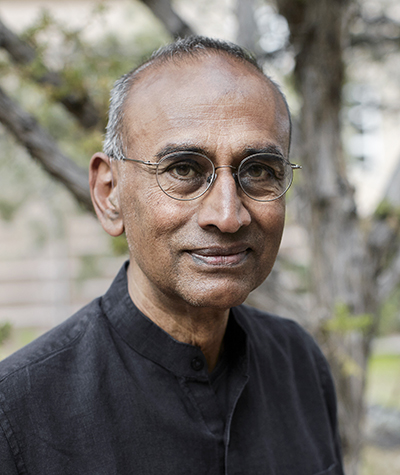
Venki Ramakrishnan, MRC Laboratory of Molecular Biology, Cambridge, England
Group Leader
“Why We Die”
Friday, September 27, 2024, 3:00 p.m., 208 Light Hall
A reception will immediately follow the lecture in the Langford Auditorium atrium.
Abstract:
Ever since we humans learned of our mortality, that knowledge has driven much of human culture. However, for most of our existence as a species, there was little we could do about aging and death. In the last few decades, this has changed. We are beginning to understand the biological basis of aging and how it leads to death. At the same time, longer life expectancies and reductions in fertility rates mean that societies face an increasingly aging population, with an urgent need to improve health in old age. The fear of aging and death is also driving a quest for radical life extension among some gerontologists. My book, on which this event is based, is an attempt to take a hard look at progress and prospects in the field of aging and also point out the social issues involved.
About Dr. Ramakrishnan:
Venki Ramakrishnan received his bachelor’s degree in physics from Baroda University in India in 1971 and his Ph.D. in physics from Ohio University in 1976. He then studied biology for two years at the University of California, San Diego before beginning his postdoctoral work with Peter Moore at Yale University. After a long career in the USA at Brookhaven National Laboratory and the University of Utah, he moved to England in 1999, where he has been a group leader at the MRC Laboratory of Molecular Biology in Cambridge. He received the Nobel Prize for Chemistry in 2009 and was the president of the Royal Society from 2015-20.
In 2000, Ramakrishnan’s laboratory determined the atomic structure of the 30S ribosomal subunit and its complexes with ligands and antibiotics. This work led to insights into how the ribosome “reads” the genetic code, as well as antibiotic function. Ramakrishnan’s lab subsequently determined high-resolution structures of functional complexes of the entire ribosome at various stages along the translational pathway, which led to insights into its role in protein synthesis during decoding, peptidyl transfer, translocation and termination. For the last decade, his laboratory has been applying cryoelectron microscopy to study eukaryotic and mitochondrial translation, especially initiation of translation and translational regulation.
Ramakrishnan is the author of two popular books, Gene Machine:The Race to Decipher the Secrets of the Ribosome (2018), a very frank popular memoir about the race for the structure of the ribosome, and more recently, Why We Die: The New Science of Aging and the Quest for Immortality (2024).
Coming In October!
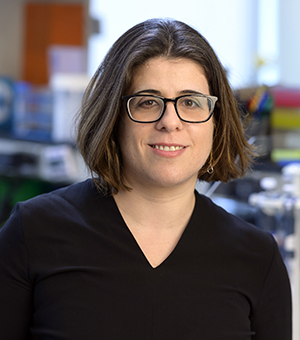
Agnel Sfeir, Memorial Sloan Kettering Cancer Center
PaineWebber Chair in Cancer Genetics
“Two Genomes, One Balance: Mitochondrial and Nuclear DNA Stability”
Wednesday, October 30, 2024, 2:00 p.m. CT, 202 Light Hall
A reception precedes the lecture at 1:00 p.m. in 618 Light Hall.
Co-sponsored by the Department of Biochemistry
Abstract:
Dr. Sfeir’s scientific contributions are notable for their breadth and depth, unified by the theme of genome stability. Trained as a telomere biologist, she has made seminal contributions to our understanding of telomere protection and maintenance. Since establishing her lab in 2012, she has been fascinated by the remarkable ability of cells to preserve genomic stability and curious about how these pathways fail in cancer cells. Her laboratory has significantly advanced research in two key areas: DNA double-strand break (DSB) repair of nuclear DNA and mitochondrial DNA (mtDNA) stability.
About Dr. Sfeir:
Molecular biologist Agnel Sfeir studies how DNA is broken and repaired, and how these processes are related to aging, cancer, and other phenomena. A recent interest of hers is in the biology of the DNA inside of mitochondria — the “power plants” of the cell. She calls this DNA “the forgotten yet fascinating genome.”
Dr. Sfeir joined Sloan Kettering Institute’s Molecular Biology Program in March 2021, having previously been a faculty member at New York University’s Skirball Institute of Biomolecular Medicine. In an interview, she spoke about her research interests and what motivates her as a scientist.
Previous Lectures
Karen Adelman, Harvard Medical School Edward S. Harkness Professor of Biological Chemistry and Molecular Pharmacology
Edward S. Harkness Professor of Biological Chemistry and Molecular Pharmacology
“Transcriptional Control of Stress and Immune Responses”
Wednesday, April 10, 2024, 2:00 p.m. CT, 1220 MRB III
A reception will immediately follow the lecture in the MRBIII atrium.
Co-sponsored by the Department of Biochemistry
Abstract:
The transition of promoter-proximally paused RNA polymerase II (Pol II) to productive elongation is a central, regulated step in metazoan gene expression. At many genes, paused Pol II is released efficiently into the gene body by the kinase P-TEFb. However, paused Pol II can also be targeted for early termination by the Integrator complex. Importantly, Integrator acts at many stress-responsive genes, to attenuate their activity in the absence of stress signaling. Here, I will discuss the mechanistic and physiological consequences of disruptions in Integrator activity, which are implicated in inflammatory disorders, cancer and neurological disease.
About Dr. Adelman:
Dr. Karen Adelman is the Edward S. Harkness Professor of Biological Chemistry and Molecular Pharmacology at Harvard Medical School. She is also a Member of the Gene Regulation Observatory at the Broad Institute, and the Ludwig Cancer Center at Harvard Medical School. The Adelman lab pioneered genomic studies of RNA polymerase II (RNAPII) transcription, revealing that pausing of RNAPII in early elongation is a central regulatory step in metazoan gene expression. Ongoing work probes the interplay between transcription, RNA processing and epigenetic machineries to elucidate the determinants of mature mRNA formation in health and disease. Dr. Adelman received the NIEHS, NIH Early Career Award in 2006 and in 2010 earned the NIH Directors Award for Scientific Achievement. She was elected to American Academy of Arts and Sciences in 2023.
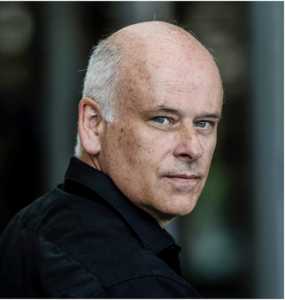 Robert Tampé, Goethe University Frankfurt
Robert Tampé, Goethe University Frankfurt
Professor of Biochemistry at the Biocenter, Director of the Institute of Biochemistry
“From Antigens to Defense: Cellular Machineries in Quality Control and Adaptive Immunity”
Thursday, March 7, 2024, 12:00 p.m. CT, 208 Light Hall
Co-sponsored by the Department of Molecular Physiology and Biophysics
Abstract:
To elicit an effective immune response against pathogens and cancerous cells, MHC I molecules undergo an eventful journey from their biogenesis in the endoplasmic reticulum to their final decoding by cytotoxic T cells on target cell surfaces. Cellular machines, consisting of transporters, chaperones, and receptor clients, facilitate MHC I biogenesis, assembly, quality control, and final recognition. However, the mechanistic integration of the corresponding processes remains poorly understood. I will discuss the multichaperone-client interaction network of the MHC I peptide loading complex assembled on the transporter associated with antigen processing. By integrative approaches, we reveal the mechanistic underpinnings of antigen transport, epitope proofreading, quality control, and final release of MHC I complexes. In addition, the structural and mechanistic insights into the T cell receptor complex bound to a tumor-specific human class I pMHC will be discussed, including the functional impact of connecting peptides and sterol lipid for complex assembly.
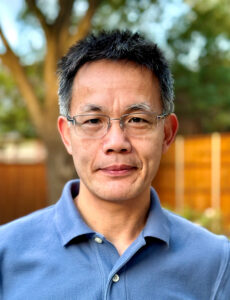 Xuewu Zhang, UT Southwestern Medical Center
Xuewu Zhang, UT Southwestern Medical Center
Professor, Department of Pharmacology, Department of Biophysics
“Structures of the Innate Immunity Adaptor STING: From Mechanisms to Potential Therapeutics”
Monday, March 4, 2024, 4:15 p.m. CT, 1220 MRB III
A reception will immediately follow the lecture in the MRBIII atrium.
Co-sponsored by the Department of Pharmacology
Abstract:
STING is a critical innate immunity adaptor protein in the cytosolic DNA-sensing pathway. Activation of STING by the second messenger cGAMP triggers a host of immune responses, including interferon production, autophagy and inflammation. STING-mediated immunity is not only essential for responses to bacterial and viral infection, but also plays an important role in tumor suppression. STING therefore has been extensively studied and exploited for therapeutic purposes. In this seminar, I will present our recent cryo-EM structures of STING in various states, and STING bound to several small drug-like molecules that have potential to be developed into therapeutics. The structural analyses provide key insights into the fundamental regulatory mechanisms of STING, and guide drug development.
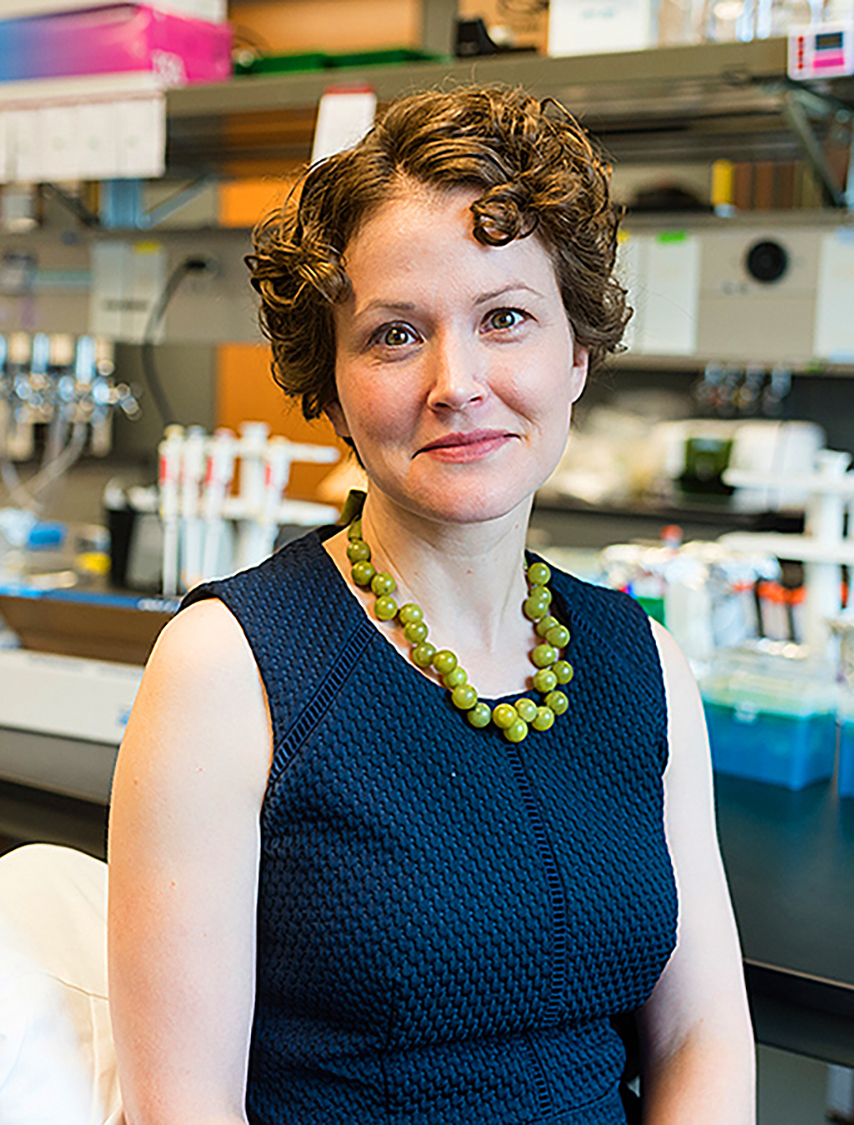 Jeanne Stachowiak, University of Texas at Austin
Jeanne Stachowiak, University of Texas at Austin
T. Brockett Hudson Professor of Chemical Engineering
“Intrinsic Disorder as an Organizing Principle for Membrane Biology and Biomaterials”
Tuesday, Feb. 13, 2024, 2:00 p.m. CT, 1220 MRB III
Co-sponsored by the Department of Biochemistry and the School of Engineering
Abstract:
As the gateway for cellular entry and communication, the surface of the cell holds the answers to critical questions in biology and medicine, while simultaneously providing inspiration for engineered materials and systems. Recent progress in our lab and others illustrates that networks composed of proteins with a high degree of intrinsic disorder may provide the necessary flexibility to facilitate efficient assembly of functional protein complexes at membrane surfaces. In particular, we found that a flexible network of disordered proteins helps to catalyze the assembly of endocytic structures at the plasma membrane. This understanding provides new insight into the optimal design of therapeutic carriers that harness endocytosis for cellular entry. More broadly, our lab seeks to understand and mimic the ability of biological membranes to spontaneously reorganize in response to diverse cues. This remarkable capacity for self-organization, which is largely absent in man-made materials, holds great promise for the design of responsive, cell-like therapeutic systems.
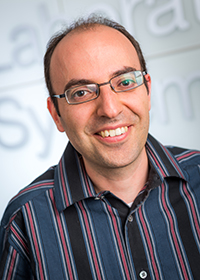 Mohammed AlQuraishi, Columbia University
Mohammed AlQuraishi, Columbia University
Assistant Professor of Systems Biology
“The State of Protein Structure Prediction and Friends”
Monday, January 29, 2024, 12:00 p.m. CT, 214 Light Hall
Co-sponsored by the Center for Applied AI in Protein Dynamics
Abstract: AlphaFold2 revolutionized structural biology by accurately predicting protein structures from sequence. Its implementation however (i) lacks the code and data required to train models for new tasks, such as predicting alternate protein conformations or antibody structures, (ii) is unoptimized for commercially available computing hardware, making large- scale prediction campaigns impractical, and (iii) remains poorly understood with respect to how training data and regimen influence accuracy.
Here we report OpenFold, an optimized and trainable version of AlphaFold2. We train OpenFold from scratch and demonstrate that it fully reproduces AlphaFold2’s accuracy. By analyzing OpenFold training, we find new relationships between data size/diversity and prediction accuracy and gain insights into how OpenFold learns to fold proteins during its training process.
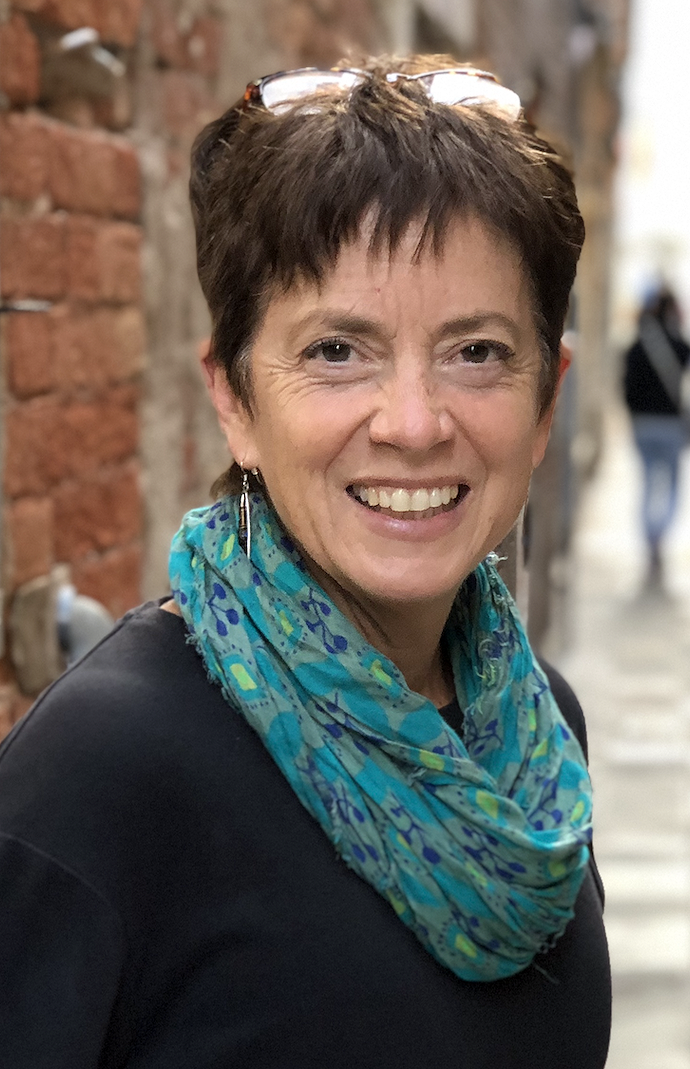 Monica Driscoll, Rutgers University
Monica Driscoll, Rutgers University
Professor, Department of Molecular Biology and Biochemistry
“Neurons Put Out the Trash: Modeling Aggregate and Organelle Transfer in a Living Nervous System”
Monday, January 8, 2024, 4:00 p.m. CT, 1220 MRB III
Co-sponsored by The Vanderbilt Center for Extracellular Vesicle Research
Abstract: Proteostasis disruption is a major contributor to neurodegenerative disease and to age-associated decline in cognition. In recent years, the importance of small and large extracellular vesicles in animal health and function have become increasingly apparent. We discovered that C. elegans adult neurons can extrude large vesicles (~5µM, 100X larger than exosomes) that we call exophers. Exophers can carry potentially deleterious proteins and organelles out of the neuron and can hand these materials off to neighboring glial-like cells. Inhibiting chaperone expression, autophagy, or the proteasome, as well as over-expressing aggregating proteins like human AD Aβ1-42, expanded polyglutamine Q128 protein, or high concentration mCherry, increases exopher production from the affected neurons. Neurons that express proteotoxic transgenes maintain higher functionality if those neurons produce exophers as compared to those that do not, suggesting that exopher-genesis can be neuroprotective. Recent studies in mammalian models report exopher-like biology in higher organisms, including in human brain. Overall, data are converging to support that the mechanism by which an exopher is produced is a likely conserved process that constitutes a fundamental, but formerly unrecognized, branch of neuronal proteostasis and stress response.
We have taken genetic and cell biological approaches to dissecting the mechanisms by which neurons distinguish the garbage they will throw out, how they store threatening material and transport it for extrusion, how the health of the sending neuron is altered by the exopher event, how the extruded exopher is recognized for degradation by a surrounding cell and how exopher-genesis is triggered and regulated—I will touch on these in describing our current understanding of exopher biology as a facet of proteostasis.
View Driscoll Apex Lecture article!